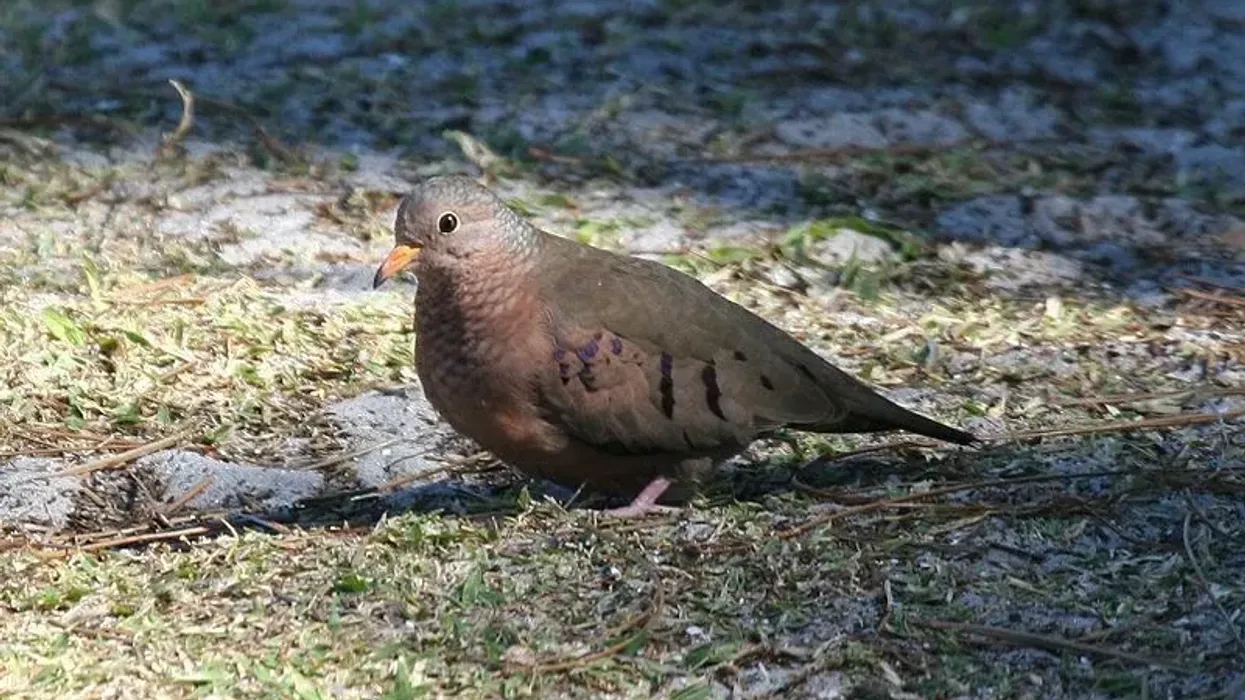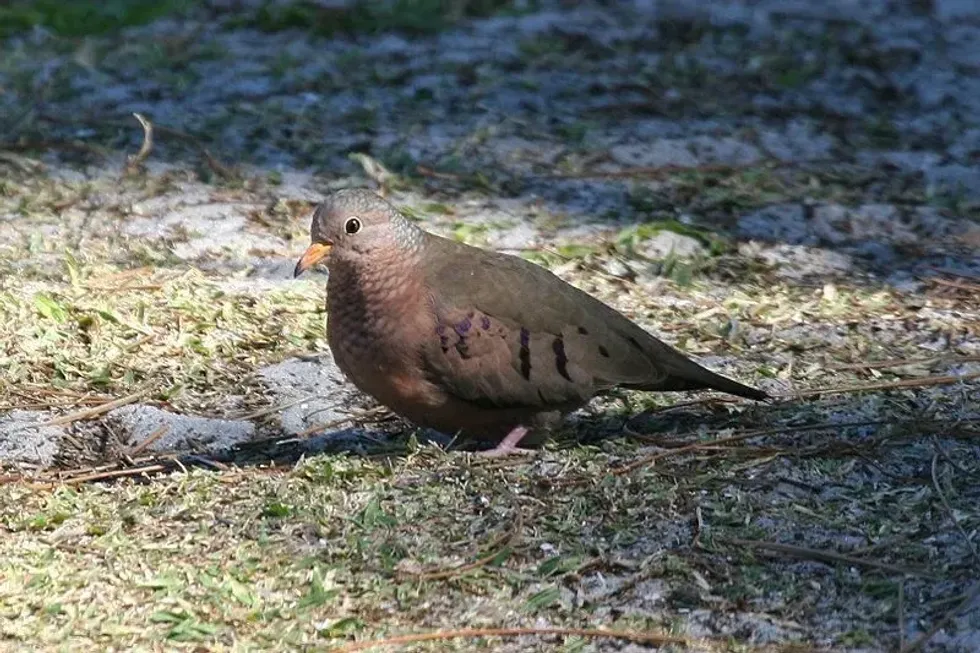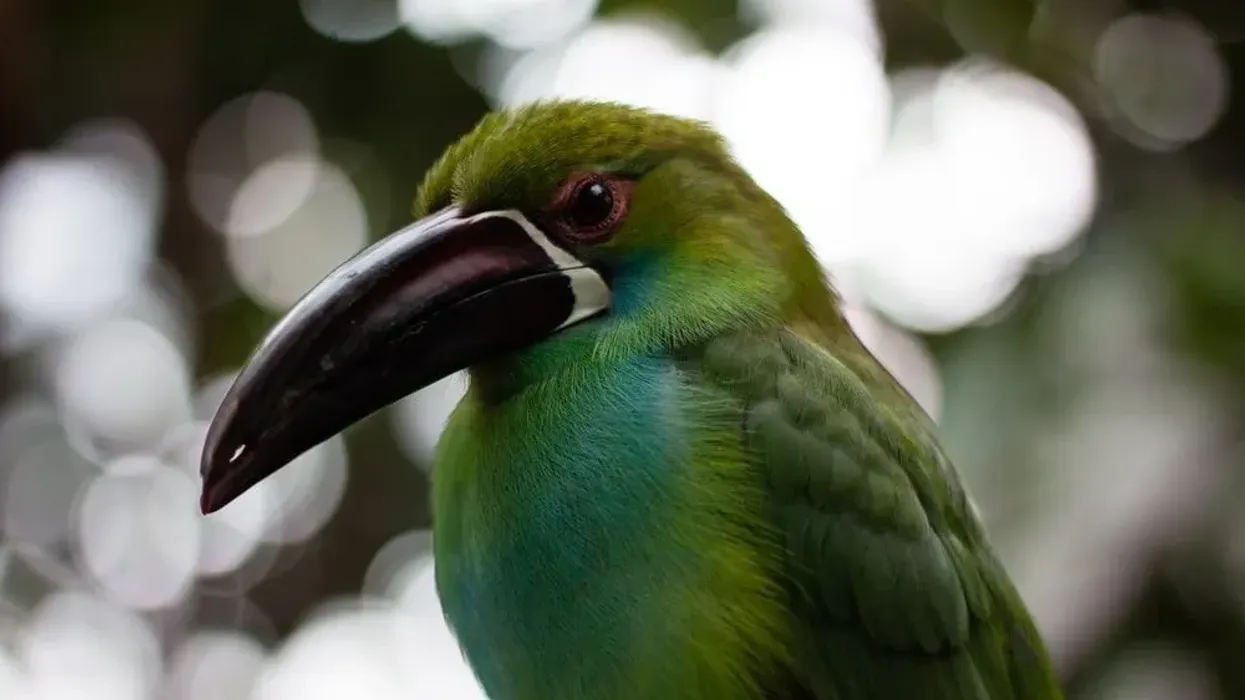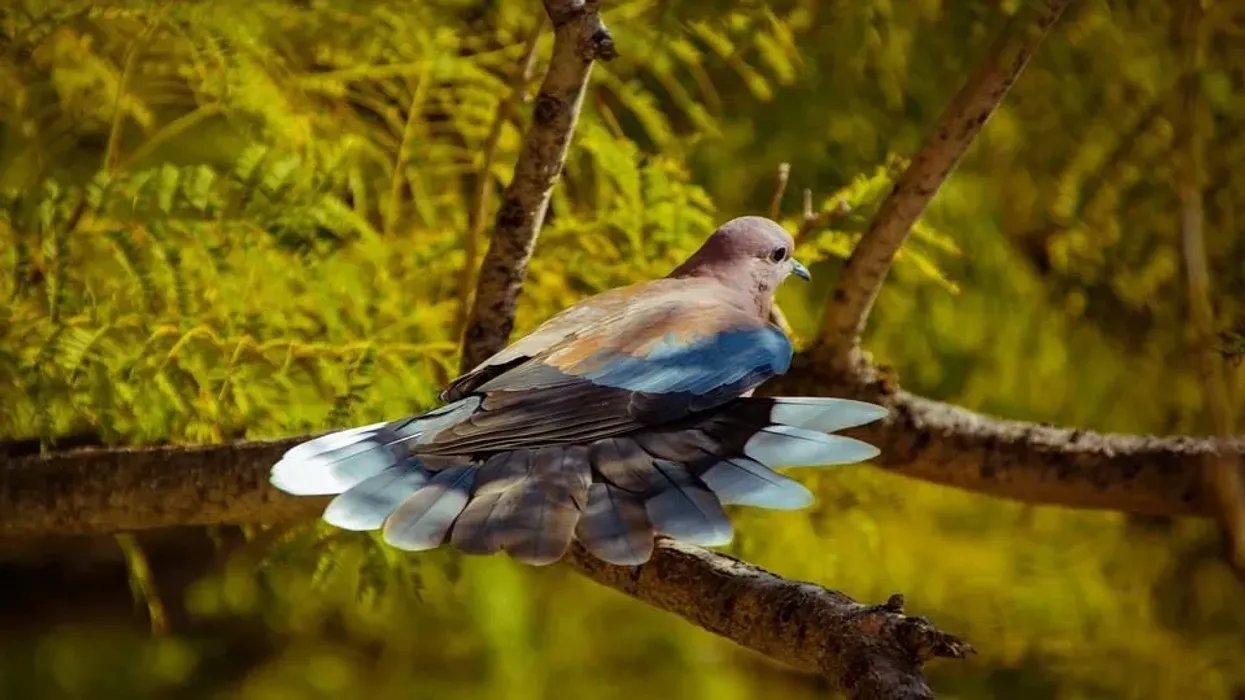If you reside or grew up in the southern part of North America, you might have come across the common ground dove. This bird species is quite small, and it is often a similar size to a sparrow.
The common ground dove's scientific name is Columbina passerina. Apart from being one of the most widely found North American birds, this bird species is also found in Central America, the Caribbean, and parts of South America.
The main plumage of this bird species is sandy brown.
Even though the male and female of this species look quite similar, a male tends to have a pinkish hue to its feather, which is absent in female birds. The common ground dove forages in open areas in search of food.
The bird also prefers to stay in open areas and may even venture into towns and cities. Even though these are plain-looking birds, the rufous of their wings are seen when in flight.
Want to know more? Keep reading to learn more interesting common ground dove facts. Also, check out our articles on least tern and guinea fowl.
Common Ground Dove Interesting Facts
What type of animal is a common ground dove?
The common ground dove (Columbina passerina) is the smallest pigeon that is present in the United States. These North American birds are seen in the southern states of America.
What class of animal does a common ground dove belong to?
Common ground doves belong to the class Aves and the family Columbidae.
How many common ground doves are there in the world?
According to the International Union for Conservation of Nature's Red List, the current population of the North American common ground dove is about 11,000,000 breeding individuals.
Where does a common ground dove live?
The common ground dove (Columbina passerina) is mainly found in the southern half of North America, Central America, and the islands of the Caribbean, as well as South America. In the U.S., the common ground dove is found from California to Florida.
What is a common ground dove's habitat?
Common ground doves prefer open habitats rather than closed habitats. The common habitats for these birds include open areas, shrubby areas, open savannahs, and riparian corridors. The habitats of this bird species may also include human-inhabited areas like towns and suburbs.
These birds can also be found in agricultural fields and gardens. Habitats for breeding grounds may include deserts. In Florida, these North American birds can be seen in habitats like oak scrubs, open pine forests, flat woods, and coastal strands.
Who do common ground doves live with?
Common ground doves may either be seen in pairs or flocks. Common ground doves are also known for forming strong social bonds. These birds may live in close vicinity to humans, so they might not be afraid of you.
How long does a common ground dove live?
The average common ground dove life span is anywhere around five to seven years. However, some birds may struggle to live to three years of age. It is mainly due to the high mortality rates of these birds, and about 40% of the deaths are due to accidents.
How do they reproduce?
One of the most striking and defining things about the common ground dove (Columbina passerina) is its process of breeding and reproduction. The breeding season of common ground doves is from February to October.
Common ground doves are monogamous, and the breeding pair shares a tight bond. Common ground doves mate for life in most cases.
Females begin to build the nests two to three days before laying common ground dove eggs. The nests aren't of the best quality, and they are either built on the ground or in higher areas.
Males get territorial about their mate as well as for the nest with the eggs in. Females lay two eggs on average, and some may lay three eggs. A common ground dove egg is ovular in shape. The common ground dove incubation time lasts for 12 to 14 days.
Both sexes are responsible for brooding. The baby birds are fed with crop milk and seeds. A common ground dove baby is usually covered in a gray down and the juveniles fledge from the nests within 14 days of birth.
What is their conservation status?
According to the International Union for Conservation of Nature's Red List, the current common ground dove IUCN status is of Least Concern.
Common Ground Dove Fun Facts
What do common ground doves look like?
The plumage of the common ground dove has been described as sandy brown. This dove species is quite small, and its size is often compared to that of a sparrow.
As these birds are small, a common ground dove may often have a chunky look and it also has short legs. The plumage of this bird has a scaled pattern on its breast and the underside of the bird.
Their wings have a sandy brown coloration along with dark sports. The wings of this bird species are short and round.
This bird also has a short tail and a thin bill. The wings of common ground doves also have rufous patches, which are only visible when the birds are flying.
The bill of this bird is often bi-colored with a darker tip. Female birds look duller compared to male birds, who have a pinkish hue in their plumage which is found on the bird's neck and chest area. Males get brighter legs during the breeding season.
Knowing the difference between a common ground dove vs. a mourning dove is quite simple as a mourning dove has a much longer and tapered bill compared to a common ground dove. Also, mourning doves are much larger compared to common doves.

How cute are they?
The small size of this dove species makes them look adorable.
How do they communicate?
As you may know, all kinds of pigeons are known for making a lot of noise. Communication for the common ground dove is also based on its song and calls.
adults use the repetitive 'woot woot woot' sound to communicate with other birds. When a dove feels threatened, it gives out the 'wut-wut' call. The constant ‘cooing’ is often used as a group song by common ground doves.
The common ground-dove call for juveniles includes 'peep' and 'cheep' sounds. Another important ground dove sound includes its in-flight call that acts as a warning signal for its family members.
How big is a common ground dove?
The common ground dove size is around 5.9-7.1 in (15-18 cm). It is slightly smaller than an Inca dove that reaches an average length of 6.5–9.1 in (16.5–23 cm).
How fast can a common ground dove fly?
Doves are fast birds, and some may have flight speeds of up to 50 mph (80 kph). Even though the exact flight speed of the common ground dove hasn't been studied, we can assume that these birds can fly fast.
How much does a common ground dove weigh?
The average common ground dove weight is around 1.0-1.4 oz (28-40 g).
What are the male and female names of the species?
A male dove is known as a cock, while a female dove is known as a hen.
What would you call a baby common ground dove?
A baby common ground dove juvenile is called a squab or simply a chick.
What do they eat?
Common ground doves like to feed on different kinds of seeds. However, these birds will also feed on various kinds of insects. This species forages on the ground in search of food and can even find its way into agricultural lands.
In the breeding season, six to 20 birds forage along with their family. Both sexes can produce crop milk by digesting snails, and this is used to feed the babies. Crowngrasses and dove weed are the most common seeds eaten by this bird species.
Are they friendly?
Though the common ground dove might not be extremely friendly to human beings, the birds are often seen in the presence of humans. These doves may even frequent agricultural fields and gardens.
Would they make a good pet?
Even though doves are a common pet all around the world, we will advise you not to keep a common ground dove as a pet.
Did you know...
A typical common ground dove disease is Salmonellosis, which is caused by bacteria.
The name, common ground dove, comes from the bird's habit of foraging on the ground.
If the nesting pair of a common ground dove dies, it will try to take care of it for a while and may also return to the place where the death took place.
Climate change can adversely affect all bird species, including common ground doves. Climate change could destroy the habitats preferred by these birds, and the decrease in places may restrict the birds from breeding.
Even though these birds sit on the ground during the daytime mainly to forage, these doves will most likely roost in trees during the night while sleeping.
Common ground doves can suck up water through its beak and drink water without bending its neck, which is the same for other species of doves and pigeons.
How much does a common ground dove need to eat in a day?
It has been estimated that a common ground dove needs to eat more than 2,500 seeds daily to fulfill its calorie needs. These birds also store many seeds in the two-lobed crop present in their esophagus.
What do common ground doves do after rainfall or fires?
It may sound strange, but many common ground doves take the opportunity to breed after rainfall or a fire to take advantage of the abundance of food that is found during this time.
Here at Kidadl, we have carefully created lots of interesting family-friendly animal facts for everyone to discover! Learn more about some other birds including the American white ibis or Eurasian collared dove.
You can even occupy yourself at home by drawing one on our common ground dove coloring pages.










